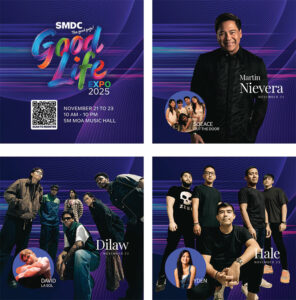In a world where customers can swap brands with a single swipe or tap, loyalty is no longer something businesses can take for granted. People have choices. In fact, they have thousands of them. That’s why user experience (UX) design matters more than ever.
Aside from helping users complete tasks, good UX builds trust, creates ease, and turns one-time visitors into regulars. In today’s fast-moving markets, UX isn’t a luxury. It’s the thing that keeps people coming back.
UX Starts with the First Click
The moment someone lands on your website or opens your app, they start forming opinions. If the layout is confusing or the steps to sign up are too long, they’re gone. Onboarding is where loyalty begins or ends.
More than function, that early interaction is about setting expectations. A clear layout, fast feedback, and smart design signal to users that they’re in the right place. If they hit roadblocks straight away, even small ones, they’re more likely to give up.
On the other hand, having things feel smooth right at the beginning makes users confident that they’ve made a good choice. That feeling is the start of loyalty, and it grows with every positive experience after they scroll and click through your site or app.
We’ve seen this play out clearly in platforms that serve fast-paced digital markets. Take crypto gaming sites, where users are excited to play and have fun. As such, it makes sense that they’d want smooth access, transparent systems, and near-instant results. If the design slows them down, they won’t return.
That’s why this guide offers a useful look at how easily navigable platforms that make web elements load quickly keep users coming back. Whether it’s one-click wallet access or instant feedback after every action, the experience was built to earn trust from the very start.
Time-to-value matters. When people notice that they’ve spent too much time waiting for a page to load or have clicked on a button too many times without any response, they leave. In contrast, they stay engaged when they get what they want. A well-designed UX ensures users know exactly what to do next and why it matters.
Personal Touches That Make a Difference
People don’t want a generic experience. They want to feel like a product or service was built for them. That’s where personalisation comes in. Design must respond to user behaviour, like showing favourite features first or remembering what users did during their last session. This way, the experience feels familiar, useful, and relevant every time they return, like the product already knows what they’re here to do and helps them do it faster.
These days, it’s what people expect. 71% of consumers now expect personalised experiences, and companies that get it right can see up to three times higher customer lifetime value from new users. When someone feels seen and understood, they’re far more likely to stick around and return often.
Little things count. A message that says “Welcome back” or a pre-filled form based on past use saves time and shows attention to detail. These touches build emotional loyalty.
Design That Listens and Learns
UX is about solving problems, and that means listening intently to its target audience. Great platforms make it easy for users to give feedback. Whether it’s a quick rating button or a small comment box, users want to feel heard.
When that feedback turns into action, users notice. Maybe they once struggled to find a setting, and now it’s right where they expect it. These updates show that the team behind the product is paying attention, and that kind of responsiveness earns respect.
Some companies go beyond and build communities that create a sense of belonging, including discussion forums or shared challenges. As people feel like they’re a part of something bigger, they tend to stick around since it’s become more than just about the product. It’s about the experience and the people tied to it.
Consistency Wins Over Flash
Fancy animations and cool effects can be fun, but they aren’t what keep people loyal. What matters more is consistency. Users feel comfortable when they know what to expect, so it’s good to have the same icons, same menu structure, same tone across web, app, and email. Comfort builds habit. Habit builds loyalty.
On the flip side, inconsistency breeds confusion. If the app looks totally different from the website or buttons behave unpredictably, users get annoyed. They lose trust. Even small design mismatches can chip away at a user’s confidence.
The Speed Factor
People expect things to work fast. Delays, bugs, or slow-loading screens hurt the experience. If someone has to wait 10 seconds for a page to load, they’re more likely to leave than stay.
Even a few seconds can make a difference. In fact, 53% of mobile users will abandon a site if it takes more than 3 seconds to load. That’s more than half your audience, gone before they even see what you offer.
Designing with speed in mind means simplifying visuals, cleaning up code, and cutting unnecessary steps. Especially on mobile, where people use one hand and a smaller screen, speed and simplicity matter even more.
In industries where money is involved, like digital marketplaces or crypto platforms, slow actions are annoying and a deal-breaker. Instant feedback, quick transaction updates, and clear confirmations are essential.
Accessibility is a Must
Making a product usable for more people is smart design. Accessibility means thinking about how different people interact with screens, buttons, and content. For some, that’s using voice commands. Meanwhile, others may need larger text, better contrast, or full keyboard access.
When a design feels easy for everyone, no one feels left out. That level of care builds trust, especially in competitive spaces where users have plenty of alternatives. If one brand makes life easier and the other doesn’t, it’s not a hard choice.
Loyalty Starts with Experience, Not Just Product
Good UX goes beyond looks. It’s about how excited users get when they use your website or app. Every second counts, every click matters, and every detail adds up. From fast load times to personal touches and clear, consistent layouts, these choices show users that their experience comes first. In a crowded market, that kind of care makes you stand out. Plus, it builds trust, drives loyalty, and turns casual users into long-term customers.


















